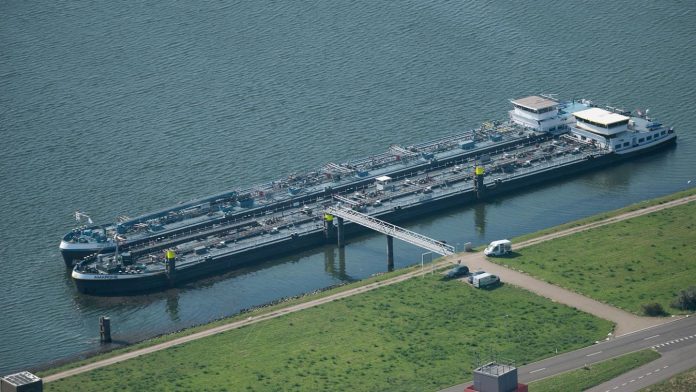Mixed berthing will be officially allowed from the second week of January in the port of Rotterdam.
Inland vessels carrying hazardous cargo will be allowed to berth at about 50 mixed berths in the port of Rotterdam. This will allow so-called cone ships to berth right next to each other and next to vessels without hazardous cargoes.
The Port of Rotterdam Authority has gained experience with this in a trial over the past year and a half. According to the Dutch port, both the Harbour Master of Rotterdam and the inland shipping industry have found the pilot to be very positive.
As there is a great need for more berth capacity in the port area, the Harbour Master is going to allow mixed berthing at some 50 berths.
The port authority thus anticipates the amendment of the Inland Waterways Police Regulations (BPR) the ministry is currently working on. This amendment to the BPR describes the already existing authority to deviate from the safety distances between vessels carrying either one or two cones and between vessels that do not carry hazardous cargo.
Also, in doing so, the ministry is drawing on the successful experience already gained in Rotterdam with mixed berthing. The amendment to the BPR is expected to come into force during 2023-2024.
Mixed berthing is in line with the Port of Rotterdam Authority’s policy of using the existing space in the port as efficiently as possible and creating more berths for inland shipping.
Furthermore, the berths in the Rotterdam port area where mixed berthing will soon be allowed have been determined in consultation with the inland shipping industry and the Safety Region, among others.
In more detail, to ensure safety, not all inland vessels are allowed to use mixed berths, and certain activities are also prohibited. These activities include smoking and activities involving open flames, work that could cause sparking or bunkering LNG or methanol.
Furthermore, a reporting requirement may also be imposed in certain cases, such as reporting the hazardous cargo in IVS-next (the Inland Shipping Information and Tracking System). All conditions under which mixed berthing will be allowed are set out in the Administrative Order ‘Mixed Berthing’ 2022.







